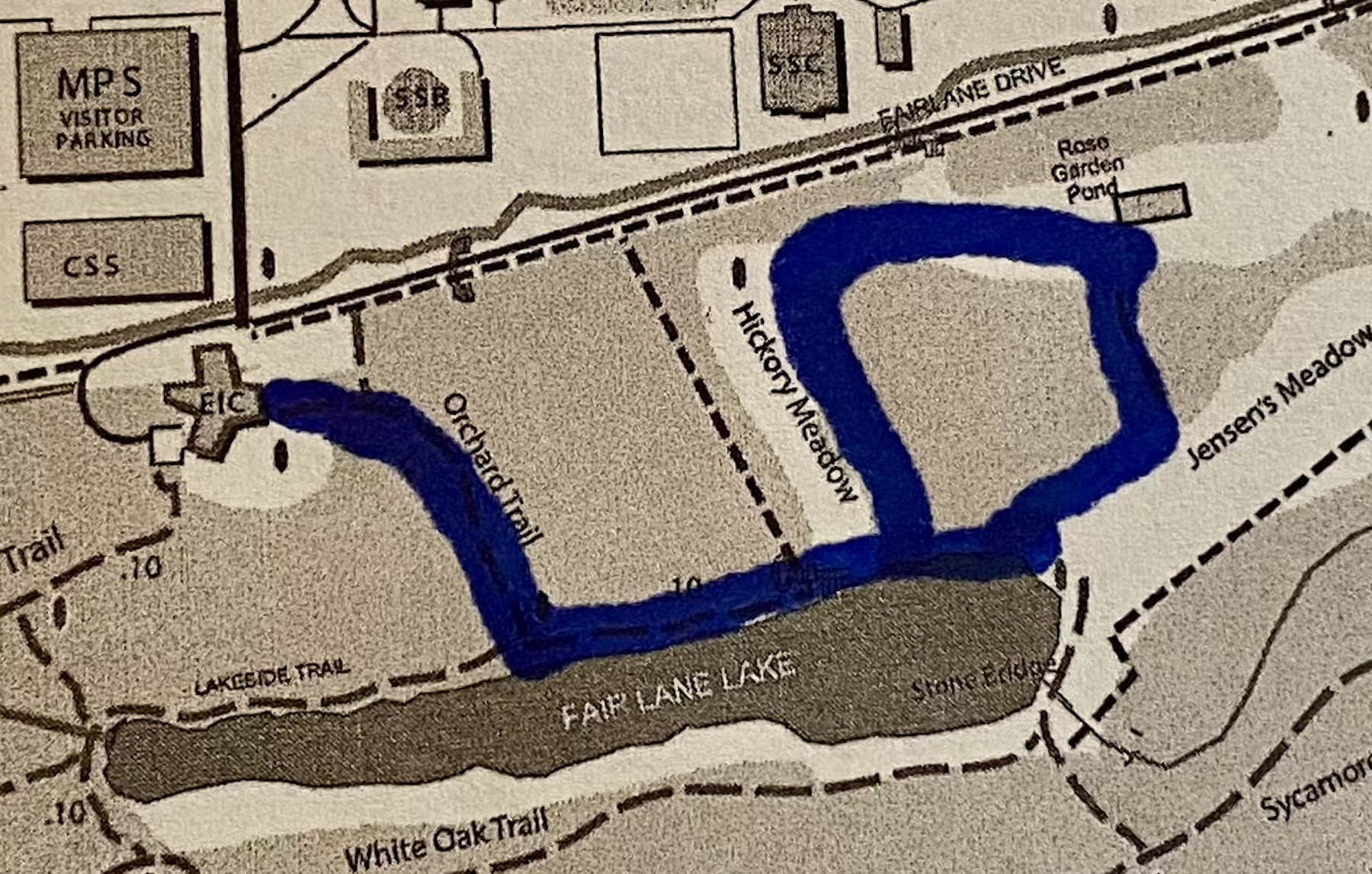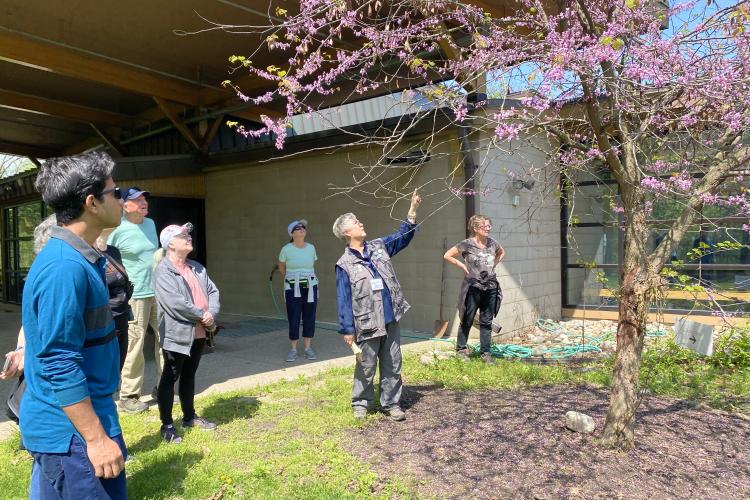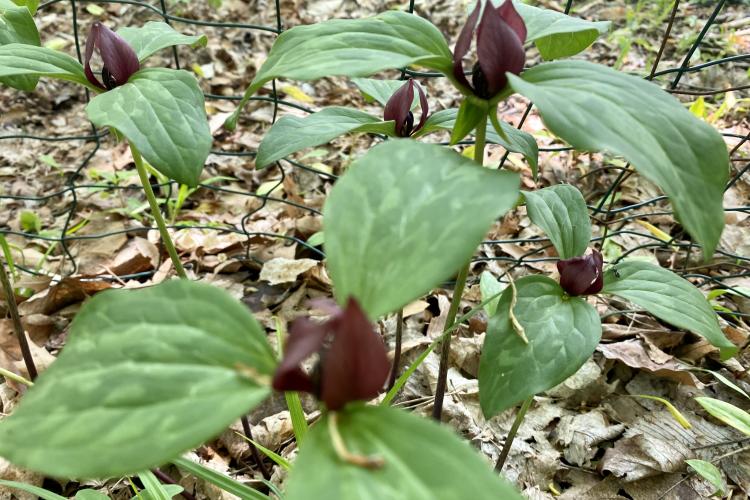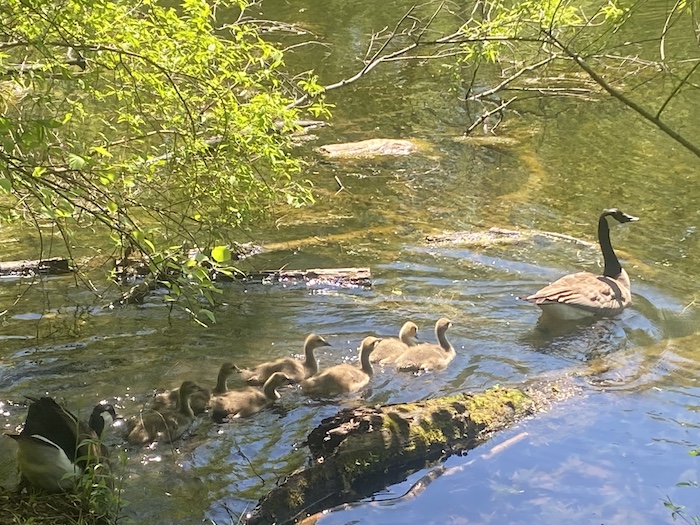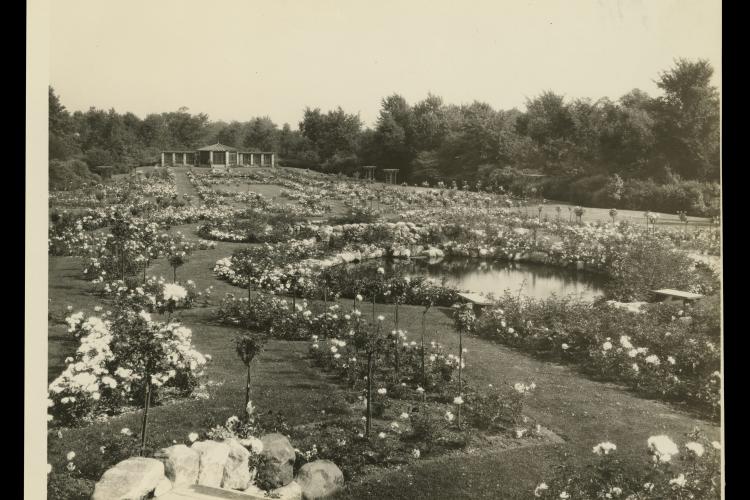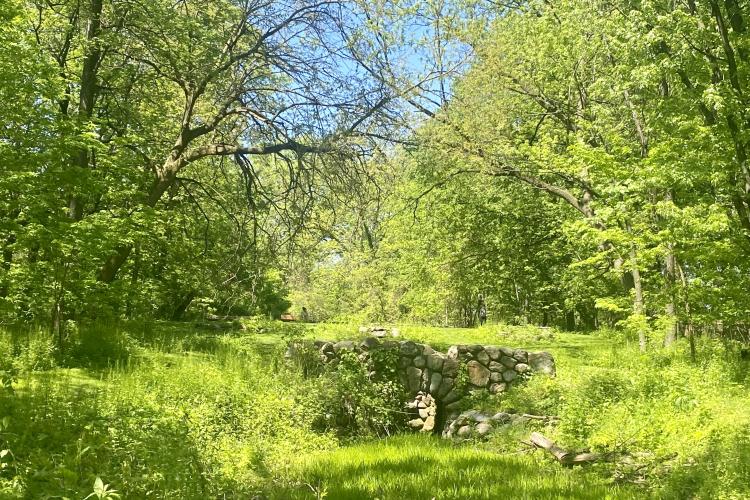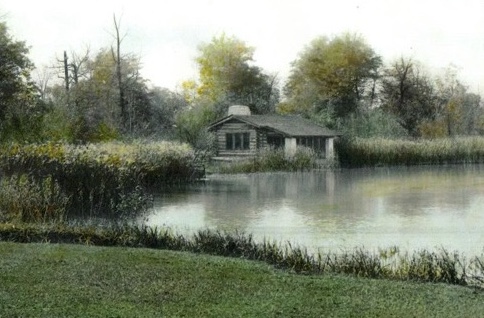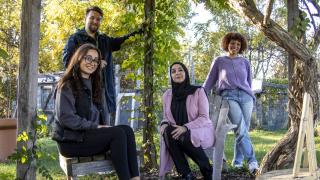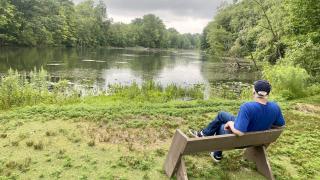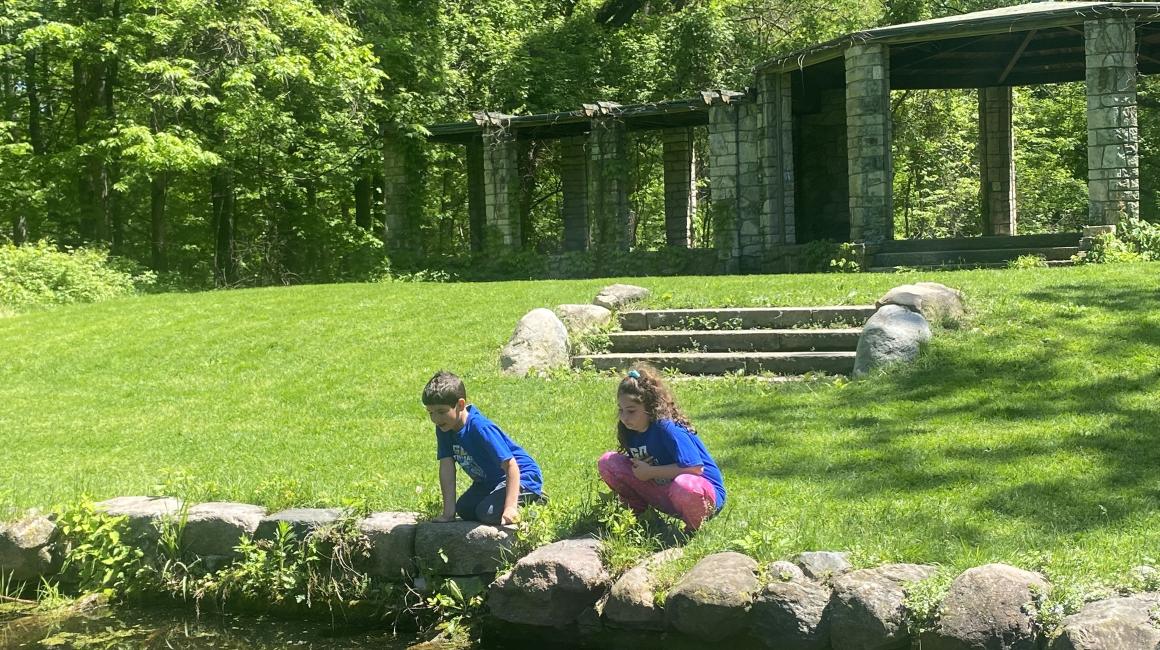
Looking above, there’s a bright blue indigo bunting from Central or South America making chirping sounds of “sweet sweet choo choo yum yum.” On the ground, mayapples — Clara Ford used to turn the ripened pulp of the fruit into jelly — are blooming. And right ahead is the Fair Lane Lake, with painted turtles on logs and great blue herons dipping in the water for fish.
Welcome to the Environmental Interpretive Center’s Orchard Trail, which visitors can access right near the Center’s covered picnic area.
On a recent walk down the Orchard Trail to the lake, EIC Program Coordinator and Interpretive Naturalist Dorothy McLeer pointed out interesting trail highlights that you might miss if you don’t know what you’re looking at. And this includes how the trail got its name.

